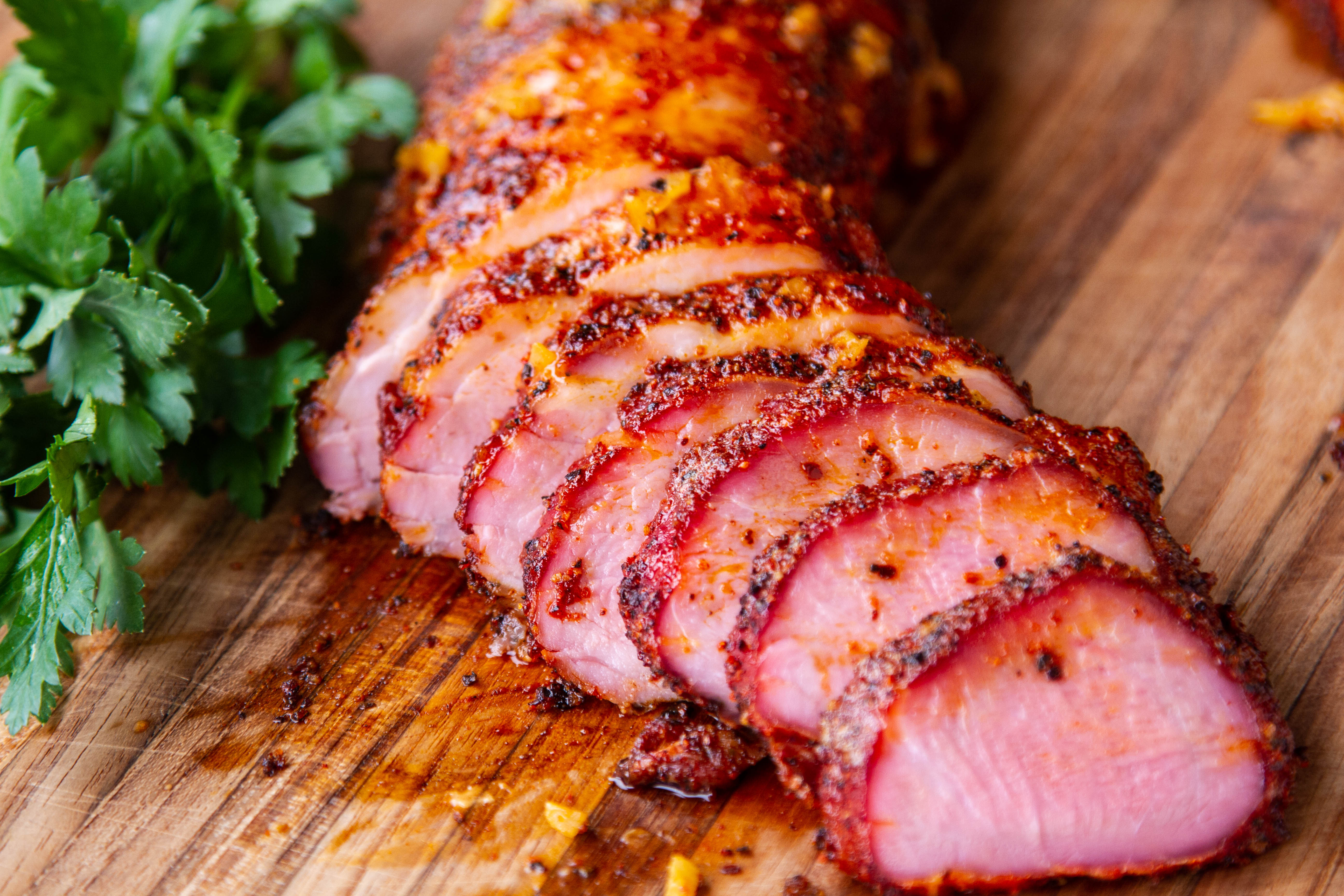Pork fillet, also known as pork tenderloin, is a lean and tender cut of meat that can easily dry out and become tough if overcooked. With the right techniques, cooking pork fillet so that it turns out juicy and delicious every time is totally doable in your home kitchen.
If you want to cook pork tenderloin or fillet perfectly, this guide has everything you need to know. From picking the right cut to cooking methods, temperature control, seasoning ideas, and serving suggestions, you’ll learn how to make this lean pork cut taste great, be juicy, and be a pleasure to eat.
Benefits of Cooking Pork Fillet
Pork tenderloin offers a few advantages that make it a great meal option
-
Very lean and low in fat—less than 2 grams of fat per 3 ounce serving
-
High in protein to keep you satisfied – 24 grams in a 3 ounce serving
-
Quick cooking time – can be ready start to finish in 30 minutes
-
Versatile – pairs well with endless flavors and ingredients
-
Budget-friendly – less expensive than other premium pork cuts like loin or chops
-
Easy to cook evenly since it’s smaller and slender in shape
While quite lean, with proper cooking, pork tenderloin can be very juicy and tender. The tricks are choosing the right cooking method and not overcooking it.
Choosing the Best Pork Tenderloin
Look for pork tenderloin that is:
-
Uniformly shaped – Similar thickness throughout, not bulging or oddly shaped
-
Bright pink – Avoid any with gray, dull areas
-
Minimal fat or silverskin – Some fat cap is ok but trim excess fat and silvery membrane
-
About 1/2 to 1 pound each – Large enough for a few servings, not too large
-
Packaged correctly – Should not be sitting in liquid or leaking, no off smells
Allow the tenderloin to sit at room temperature for 30 minutes before cooking for more even cooking.
Top Cooking Methods for Pork Fillet
These methods yield tender, juicy pork fillet every time.
Pan Sear Then Bake
Searing the fillet first caramelizes the outside and builds flavor. Baking gently finishes cooking it through without drying it out.
- Season fillet all over with salt, pepper, and spices or herbs
- Heat oil in a skillet over medium-high heat
- Sear fillet 2-3 minutes per side until browned
- Transfer to a baking sheet and bake at 400°F until done, about 10-15 minutes
Grill
The high dry heat of the grill gives great char and caramelization. Just watch closely to prevent burning.
- Coat fillet with oil and season all over
- Grill over direct medium heat, flipping occasionally until done, 15-20 minutes
- If flames flare up, move to indirect heat
Broil
Similar to grilling, broiling gives nice browning. Keep a close eye to avoid overcooking.
- Line a baking sheet with foil and coat with oil
- Place seasoned tenderloin on sheet 4-6 inches under broiler
- Broil about 10 minutes per side until done, flipping halfway
Roast
Low, slow roasting in the oven lets the fillet cook gently while staying moist.
- Rub seasoned tenderloin with oil and place on a baking sheet or pan
- Roast at 375°F, turning halfway, until done, about 25-30 minutes
How to Tell When Pork Fillet is Done
Since pork tenderloin is lean, it can overcook quickly. Use these tips to test for doneness:
-
Use a meat thermometer – Temperature is the most reliable test. Pork is safely cooked between 145°F – 160°F. For ideal juiciness, remove between 150°F – 155°F and let rest. The temperature will continue rising as it rests.
-
Slice to peek inside – When sliced, properly cooked pork should show just a hint of pink in the very center. Any trace of bright pink indicates undercooking.
-
Check firmness – When pressed, cooked fillet will feel firm with just a little springiness. If still soft and squishy in center, it needs more time.
-
Watch the color – The outside will transition from pink to lightly browned when it is cooked through.
Allow pork to rest at least 5 minutes before slicing to allow juices to redistribute. Tent loosely with foil to keep warm.
Seasoning and Marinating Pork Tenderloin
With its mild flavor, pork fillet benefits from bold, robust seasoning. Consider:
-
Dry spice rubs – Cajun, jerk, barbecue, herb blends
-
Wet marinades – Teriyaki, chimichurri, olive oil and vinegar
-
Mustards and chutneys – Dijon, whole grain, fruit compotes
-
Fresh herbs – Rosemary, thyme, sage, oregano
-
Aromatics – Garlic, shallots, onion, ginger
-
Sauces and glazes – Honey mustard, sweet chili, bourbon
Mix and match flavors to complement the sides you are serving. A simple salt, pepper, and garlic rub lets the pork flavor shine through.
What to Serve with Pork Tenderloin
The possibilities for sides and complements are endless! Consider:
-
Potatoes – Mashed, baked, roasted, fried
-
Rice – White, brown, wild, pilaf
-
Grains – Quinoa, couscous, farro, polenta
-
Veggies – Roasted, grilled, or steamed
-
Salad – Tossed, potato, pasta, grain
-
Sauce – Gravy, chimichurri, salsa
-
Bread – Rolls, biscuits, cornbread
Play with contrasting flavors and textures to balance the tender pork fillet. Hearty roasted vegetables or creamy mashed potatoes make classic pairings.
Easy Pork Tenderloin Recipes
Here are 3 straightforward recipes for delicious pork tenderloin worth trying:
Simply Seared Pork Tenderloin
This guarantees a juicy, flavorful fillet in under 30 minutes using a simple pan sear and bake method.
Simply Seared Pork Tenderloin Recipe
Pork Tenderloin with Honey Garlic Sauce
Tender pork baked in a sweet and savory honey garlic glaze – an absolute winner.
Pork Tenderloin with Honey Garlic Sauce
Maple Dijon Pork Tenderloin
Maple syrup and Dijon lend sweet tangy flavor to roasted pork fillet.
Rotisserie Pork Loin
For a larger cut that still stays moist, opt for a boneless pork loin roast. Rub it with spices and let the rotisserie on your grill do the work of slow roasting it evenly.
Pork Fillet Leftovers
Leftover cooked pork tenderloin or loin keeps well refrigerated for 4-5 days. You can:
- Slice onto salads
- Shred for pulled pork
- Dice into omelets or fried rice
- Toss with pasta and veggies
- Make sandwiches or wraps
- Build bowls with grains and greens
- Slice for appetizer bites
Get creative repurposing any extra pork into easy new dishes throughout the week.
Tips for Cooking Pork Fillet
Follow these tips for the best results when cooking pork tenderloin:
-
Allow it to come to room temp before cooking for more even heating
-
Trim away excess fat and silverskin before seasoning
-
Pat dry before searing to help browning
-
Use a thermometer to accurately gauge doneness
-
Let rest before slicing into medallions or chopping
-
Avoid overcooking or it will dry out quickly
When handled with care and not overcooked, pork fillet can be extremely tender, juicy, and delicious. With the proper prep, seasoning, cooking method, and doneness assessment, you can be enjoying perfect pork tenderloin any night of the week.

Pork Tenderloin Basics
FAQ
Is pork tenderloin the same as pork fillet?
What cooking method is best for pork tenderloin?
Is it better to cook a pork tenderloin at 350 or 400?
How do you keep pork fillet from drying out?
